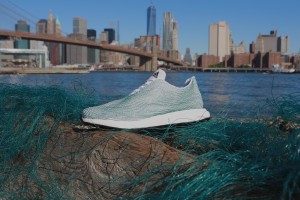CES Doctoral Practitioner in Sustainability, Erica Russell, on the recent Sustainable Brands conference:
Over the last few weeks I have been fascinated by several thought provoking examples of how brand marketing is being used or developed to shift mass opinion. Sustainable Brands held a conference in November and in the spirit of trying to make sure that ideas were disseminated as widely as possible all the keynote presentations were streamed live and are now available free online. Just as I have found the experience of hearing guest speakers at CES talk about the industry perspective on a particular topic highly enlightening so two ‘stories’ really stood out for me and have me thinking further how to use elements of them in the work I am doing in supply chains and construction.
The first example comes from Alexis Haass, Director of Sustainability at Adidas. Yup, I know Adidas, big brand, more consumption, more waste, but as we know many of the major brand names are working to reduce their impacts and at the same time really pushing the boundaries to explore a brand’s potential to create ‘positive’ change. I’m not blind to the fact that this also means reputation enhancing and upping brand value too, but is that bad? In this case Adidas were approached by the organisation Parley for the Oceans who bring together academics, artists and designers to raise awareness of the state of oceans and work to reduce and reuse the plastic waste. They collaborated with Adidas on three areas, education, R&D and direct action. Together they linked product development with a powerful campaigning message and the story of illegal gill net fishing became embodied in a shoe: really embodied in a shoe as fibre from confiscated nets have been incorporated into the design. Through the reach of the brand the campaigning message was seen by millions. Has this made a difference? Well the work did support Parley with highly memorable messaging as they and Adidas lobbied the UN prior to COP21. Adidas have increased their R&D to use more ‘sea’ waste plastics in new clothing and footwear ranges. And for something that the Huffington Post described as “a shoe that is literally made out of trash” customer demand was so positive that Adidas are taking the prototype to full production early next year. If you’d like to watch the talk and see ‘the shoe’ the video is here:
(the case study starts at about 8mins in).
The second talk was from Daniel Vennard, Global Sustainability Director for Brands at Mars and Fellow at the World Resources Institute. He focused on his work applying the communication knowledge within big brand marketing companies to support environmental action. The Institute has a campaigning goal of reducing meat consumption due to its immense impact on resources, deforestation and around 14.5% of the world’s greenhouse gas emissions. Analysis of ‘food based’ campaigning material from around the world identified a pattern; it offered education, information or abstinence. As Daniel noted from a brand perspective this isn’t a great way to ‘sell an idea’. The Institute then carried out an in-depth analysis of 15 examples in the food sector where they felt major shifts in behaviour had happened. It became clear that there were four recognisable strategies that were deployed and from this the team have developed ‘the shift wheel’ to support effective communication planning. For the full talk:
A paper will be published by the World Resources Institute in January 2016.

